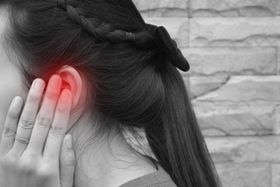Musculoskeletal Pain Explained: Common Types and Unknown Causes
Published April 10, 2023.

Musculoskeletal pain is the all-encompassing term for any pain or discomfort from injury to the muscles, bones, ligaments, tendons, and other connective tissues. Musculoskeletal pain can be acute (short-term) or chronic (long-term), mild or severe, and its symptoms depend on the exact structure affected. It is often associated with a limited range of motion, swelling, and weakness.
» Need help finding your personal wellness routine? Take a look at our quiz
Muscle Pain
Muscle pain, also known as myalgia, is a pain that is often localized to a specific muscle or group of muscles and is most common in the neck, lower back, and shoulders.
Types of Muscle Pain
- Delayed onset muscle soreness (DOMS) DOMS occurs as soreness after intense physical activity, typically within 24-72 hours after the activity, and may last several days.
- Fibromyalgia Fibromyalgia is a chronic muscular condition associated with generalised muscle pain that has lasted more than three months, at least 11 tender points, and no underlying medical condition (1).
- Muscle spasms These are sudden, involuntary, and forceful muscular contractions. They are quite common, especially in the upper and lower extremities, and can last from a few seconds to several minutes.
- Muscle strains A strain occurs when a muscle stretches beyond its limit and tears, leading to intense pain, swelling, and a limited range of motion. Minor strains will usually heal on their own but should be monitored closely in case the pain or condition worsens.
- Myofascial pain syndrome Like fibromyalgia, myofascial syndrome is a chronic pain condition caused by the presence of trigger points or knots in the muscles. The condition can lead to referred pain in other areas of the body.
Causes of Muscle Pain
- Overexertion (injury)
- Infections and diseases
- Poor nutrition, such as deficiencies in protein and potassium
- Dehydration
- Sleep deficiencies
» Relieve sore muscles with a soothing massage and our Unwind Muscle Rub
Bone Pain
Bone pain is a dull, aching pain that occurs in the bone or joints and is present with or without movement. It commonly results from injury but may also be caused by other conditions.
Types of Bone Pain
- Acute bone pain Acute bone pain is sudden and severe pain caused by a traumatic injury to the bone, such as a fracture or dislocation, and is most common in the wrist, ankle, shoulder, and hip.
- Chronic bone pain This is characterized by long-lasting pain that persists and is associated with conditions like osteoarthritis, osteoporosis, and bone metastasis.
Causes of Bone Pain
- An injury or fracture
- Arthritis
- Ageing and osteoporosis
- Cancers
- Infections and diseases like osteomyelitis or Paget’s disease
- Nutritional deficiencies (vitamin D, calcium, or other bone-forming nutrients)
» See our top foods and activities to boost bone strength
Tendon Pain
Tendon pain occurs as a result of injury to the tough, fibrous tissues that connect muscles to bones. It is characterized by a sharp, burning sensation along the affected tendon that is worsened by activity and may also present with other symptoms like stiffness and reduced range of motion.
Types of Tendon Pain
- Tendonitis Inflammation causes pain, stiffness, and burning along the infected area and can persist for several months.
- Tendinopathy Chronic pain, swelling, and muscle weakness caused by degeneration of a tendon.
- Tendonosis A chronic pain condition that involves breaking down collagen in a tendon due to repeated microtrauma.
- Tenosynovitis Inflammation of the tendon sheath that leads to pain, swelling, and contractures (permanent stiffening).
Causes of Tendon Pain
- Overuse
- Trauma
- Age-related degeneration
- Medical conditions like diabetes, rheumatoid arthritis, or gout
Ligament Pain
Ligament pain occurs when the strong, elastic tissues that connect bones and provide stability to joints become injured. It is usually sharp and stabbing pain that occurs around the affected ligament and is worsened by activity.
Types of Ligament Pain
- Sprain Occurs when the ligament is stretched or torn due to trauma or overuse.
- Strain An indirect injury to the ligament, when the tendon and muscle that attaches to it are injured.
- Ligamentous laxity A condition in which loose and unstable ligaments cause pain and joint instability.
- Ligamentous injury with joint instability A severe ligament injury that causes joint instability and may warrant surgery.
Causes of Ligament Pain
- Direct injury or trauma to the ligament
- Repetitive stress or overuse
- Degeneration
- Inflammatory conditions like rheumatoid arthritis or ankylosing spondylitis
- Infection such as septic arthritis or Lyme disease
A Note of Caution
Musculoskeletal pain is very common and, in most cases, can be alleviated at home using a variety of natural remedies and lifestyle changes. However, due to the sheer number of conditions that can fall under this bracket, it is essential to consult your doctor if the pain persists or worsens in order to get the best possible treatment plan.







